For Myanmar, January is the month of victory. Seventy-six years ago, in 1948, Aung San Mara, the main coordinator of Myanmar's anti-colonial struggle, died days before independence. But the people of Burma—the Bamars, Kachins, Karens, Chins—did not lose hope. That January, they were dreaming of building a pluralistic federal state.
Seventy-six Januaries have come and gone, and much has changed, but the dream remains unfulfilled. Even after all these years, this January is reminding us of that very dream. The state has a new name, Myanmar, but the old revolutionary "Burma," with arms in hand, has returned to strive for the cause. It's still too early to say when this dream will be fulfilled, but it's safe to say that the journey has already begun.
Amid all this, it's worth pointing out that Myanmar is experiencing this historic juncture with no help from its neighbours, and how these countries will act still remains a critical question—one that may very well affect this country's future.
The struggle though guerilla warfare
The last century, especially the 60s through the 80s, was the era of achieving liberation and political freedom through guerilla warfare. The century began with an epidemic of lost democracies. Currently, there's perhaps only a handful of pockets where political guerilla warfare is active in the world.Hamas is certainly at the frontlines in the Middle East, but in Asia, Myanmar is now the cradle of similar struggles.
The difference between Palestine and Myanmar's political context is evident. Where one is fighting to free its homeland from foreign occupiers, the other is fighting for political reformation and democracy. There are differences in terms of military conditions too. Hamas is conducting urban guerilla warfare, but the revolution in Myanmar has gone back to the traditional form, guerilla operations from the forests. Hamas' battlefield is a 41-kilometre stretch of land, while Bamars, Kachins, Karens and Chins are fighting all over Myanmar's hundreds of thousands of square kilometres. Both battlegrounds are worthy of attention from military experts; both have their political reverberations increasingly spilling out of their borders.
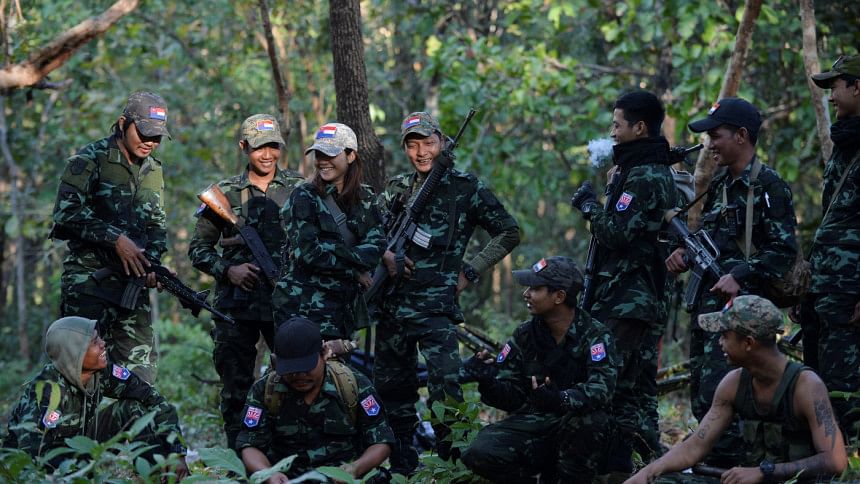
'Free zones' sprouting all over
Myanmar is a country of seven states and seven divisions. While divisions are located in the central areas of the country, states are in the peripheries. The majority living in the divisions are Bamars, and residents of the states are small, non-Bamar ethnic groups. Guerilla warfare has been a long-standing reality in the states, but it has not been a common practice in the divisions. As the entire state was controlled by a military head belonging to Bamar ethnicity, the Bamars of urban divisions did not feel the need to take arms against that occupation. However, that has changed over the past two years, as young Bamars from both rural and urban areas have taken up arms against the military junta. They are now marching in villages and cities. The war has not taken over Naypyidaw or Yangon, but the outskirts are gradually being claimed by the guerillas.
At first, the resistance was largely guerrilla-style, with hit-and-run attacks on military targets. However, in recent months, the guerrillas began to fight in more conventional ways, holding ground and administering liberated areas. They have also taken control of many towns and villages and are now in control of about half of the country's 330 townships.
The digital dimension of the guerrillas' advance is also noteworthy. The National Unity Government (NUG), a shadow government of pro-democracy activists, has established a cryptocurrency-based bank. The bank has raised $10 million in war funds by selling shares in just 10 days. It uses blockchain technology and already allows transactions in currencies of at least 10 countries.
The guerrillas' progress has attracted international attention. The fighting in Myanmar has been particularly intense in the Chin state, which borders Bangladesh and Mizoram, India. Several non-Bamar guerrilla groups have joined forces in Chin and are now in control of about 70 percent of the state. They have established their own education board, judicial system, and constitution.
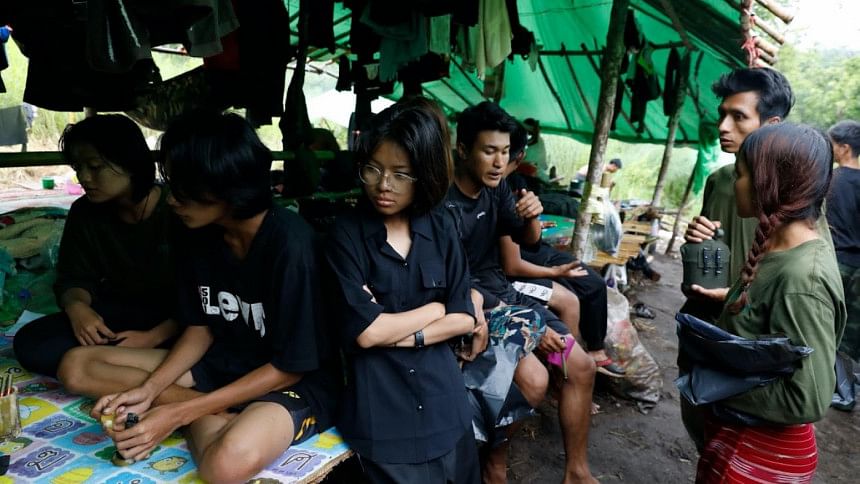
Guerrillas want a federalised "Mandala" system
In less than two weeks, Myanmar will mark three years of its military rule. The first year of resistance was largely non-violent. So, technically the armed conflict has now entered its 24th month. Currently, two main forces are driving Myanmar's armed conflict: non-Bamar guerrilla groups, which want to see the country become a federation of states, and armed Bamar youths (PDF), who want the end of military rule and the restoration of democracy.
Both groups agree that the country's current constitution, written by the military, must be abolished and replaced with a new one that guarantees democracy and federalism. Under this new system, Myanmar would be a highly decentralised country, with power concentrated in the regions rather than the centre. Ethnic groups would enjoy self-rule in their own areas, while also being part of a central federation.
This type of political model is not a new one for Myanmar. The Wa people of Shan state have lived under a similar system for centuries. As a result, it is not an impossible dream for Myanmar. The guerrillas call this the "Mandala" system, the name coming from the ancient capital. In fact, many areas in the region, now under the Association of Southeast Asian Nations (Asean), have histories of such political systems.
In Chin, the Chin National Front and other pro-democracy guerrillas are fighting the junta while also building a new system of self-governance in the areas they control, amid active warzones. It goes without saying that the resurfacing of this type of political contract can cause headaches for many of the neighbouring nations.
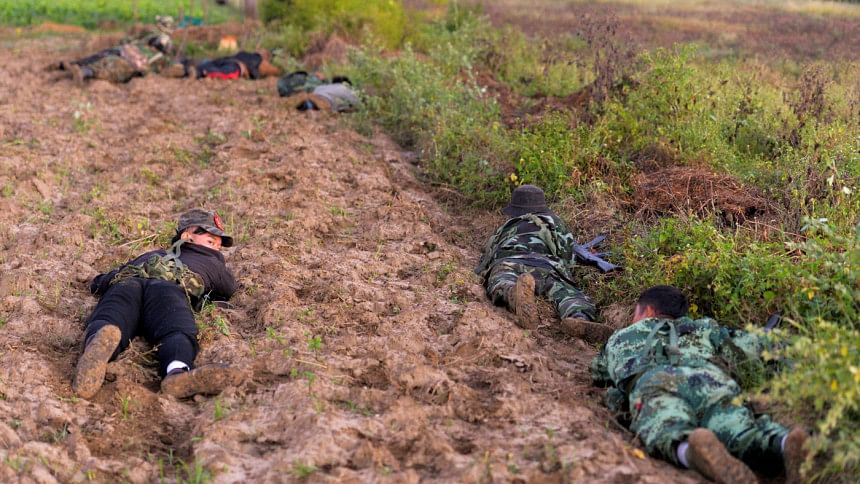
Concerns for the neighbours
Myanmar shares borders with five countries, including Bangladesh. All these neighbours are now paying close attention to this nation. China is directly involved, reportedly providing war supplies to almost all sides of the dispute. Interestingly, it has also involved itself in discussions to end this conflict. Recently, China has held several rounds of talks both with the guerrilla groups and the Naypyidaw government. However, none of that stopped the guns and missiles on the ground.
Another neighbour, India, claims that its state Manipur is burning as a result of Myanmar's guerrilla warfare. Meanwhile, 45,000 Myanmar refugees have moved into Thailand over the past two years, adding to the 90,000 already living in the country since before the current war. Every day, people are crossing the Thai border from Myanmar. And in Bangladesh, about 800,000 people came in one wave of refugees; the total number is probably over 1.2 million at this point.
What will these neighbours do if the guerrillas win the civil war in Myanmar? What are their plans in terms of Myanmar's future? What is at stake?
China's concern is quite visible. There is a 2,200-kilometre border between the two countries. More importantly, China's investment in Myanmar is huge. While many countries in the world were boycotting the government during the military junta's reign, Beijing kept supporting them. It has invested $100 million in this country in just the past three years. China wants to build a railway from the south of Rakhine to its own Yunnan. This will give China unimpeded access to the Indian Ocean. It also wants to build a hydroelectric power station in Kachin and has other such plans. However, all this has infuriated the Bamars.
China's concern is quite visible. There is a 2,200-kilometre border between the two countries. More importantly, China's investment in Myanmar is huge. While many countries in the world were boycotting the government during the military junta's reign, Beijing kept supporting them. It has invested $100 million in this country in just the past three years.
China sees the danger of political deadlock and increased violence in Myanmar if the guerillas gain any advancement in their struggle. There are visible tensions between different ethnic groups in different "liberated areas" about their future relationship. One significant reason for this is that there is no central leader on the frontline of the resistance struggle.
The NUG, the government-in-exile, recently issued a statement saying that it would protect Chinese investment if it comes to power. It seems that the NUG wants to build trust with China. However, it is not difficult to imagine that China will try all means to keep two provinces of Myanmar, Shan and Kachin, under its influence in the case that the guerrillas come out victorious. These two areas bordering China are the two largest states in Myanmar. China has a huge cultural and economic influence there. It will also want to maintain military influence for that reason in some way or the other.
It is difficult for India, on the other hand, to build such a sphere of influence in its bordering Myanmar states of Chin and Sagaing. It is also concerned about border security. The supporters of democracy in Myanmar are unhappy with India's good relations with the junta. In the past, New Delhi had good relations with Aung San Suu Kyi's party, the National League for Democracy (NLD). After the NLD lost power, India maintained its good relations with the new junta government, ignoring the party's requests. India has adopted a policy of good relations with the military government to protect its interest in Asean-related connectivity projects and its massive investments in Rakhine. It also had to resort to this geopolitical strategic decision to control the movement of its own northeast guerrillas. But now, the progress of the guerrillas in Myanmar has put India's policy in trouble. Now, New Delhi will have to come to an understanding with the local Chin National Army to access the "trade routes" it had in Chin.
What will Laos, Thailand and Bangladesh do?
Myanmar is a source of concern for other Asean countries too, including Thailand and Laos. The Naypyidaw government is still largely in control of the country, but the economy is under immense strain. The war has disrupted agriculture in villages, and international trade is being disrupted by Western sanctions. Military spending is also rising, forcing the junta to cut back on development projects. These are bound to cause a negative impact on the Thai and Laos borders.
Laos, a relatively small country, has not been a subject of great importance to Myanmar, until now, as it has been appointed as the chair of Asean this year. So, it is in Myanmar's interest to identify the political issues with Laos. The border between Laos' Bokeo region and Myanmar's Shan area is a hub for cybercriminals. Additionally, drugs are pouring into Laos from this area of Myanmar. Everyone is waiting to see if Laos, like China, will use the current opportunity to work with pro-democracy guerrillas to expel the criminals here. Recently, Laos also sent an envoy to Naypyidaw.
Similarly, it is not surprising that Bangladesh wants to see change in Myanmar. The country is tired and concerned about bearing the burden of refugees. In just the past 10 months, nearly 80 Rohingya people have been killed in internal attacks in the refugee camps in Bangladesh. The camps are gradually becoming so dangerous that chaos is spreading out. As a result, after six years of the exodus from Rakhine, Bangladesh now wants to send the refugees back by any means. In the meantime, there is another concern about the rise of Rakhine guerrillas in Arakan. Bangladesh is also thinking about what the Mandala model in the new Myanmar will look like administratively and politically. This is a concern for other South Asian nations as well, as it will challenge the concept of the current nation-state.
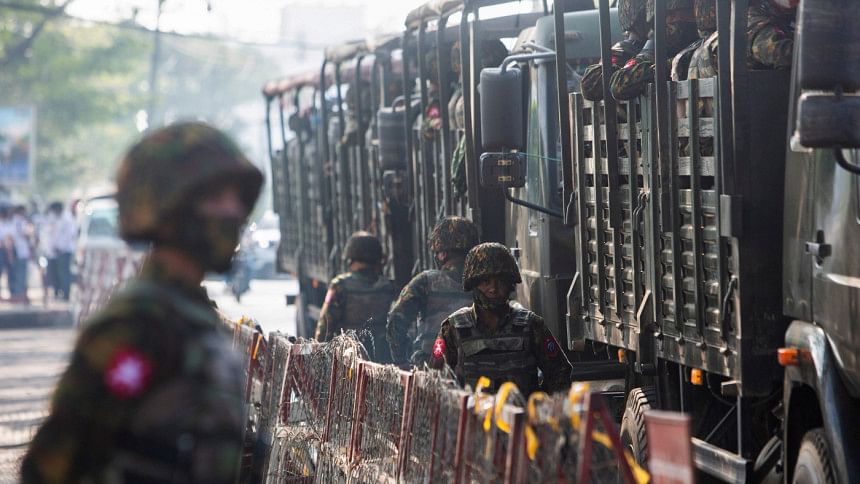
Is this a result of the new "Cold War"?
So far, the only consensus among the guerrilla forces in Myanmar is that the country's centralised government will be replaced by increased provincial autonomy. The citizenship law will be liberalised, and democratically elected leaders will run the country at the provincial and central levels. Almost all guerrilla groups believe that there will be intense debate and disagreement on many other issues beyond these general expectations. There are also concerns that such debates could lead to greater distance between the states.
If this happens, Bangladesh will have to think carefully about Rakhine, while India will have to worry about Chin and Sagaing. China will want to control Shan and Kachin. Thailand will be concerned about the Kayah, Kayin, and Tanintharyi areas. Although these areas, rich in minerals and natural resources, are now within Myanmar's borders, many of them were autonomous in the past, and some were even independent. While people in some of the areas are talking about staying within Myanmar in a federation, some are also considering the possibility of separation. For the neighbouring countries around them, this is a moment of both fear and opportunity.
The Cold War gave birth to many new countries in the last century. Perhaps Myanmar is the new region where similar things will happen in this century. Although the surrounding regions of guerrilla-permeated Myanmar are still immersed in the cocoon of centralised "stability," multiculturalism in Asia can also be on the horizon. The country with a population of over 5.5 million, which is four times the size of Bangladesh, is definitely moving towards a structural metamorphosis. There is a real possibility that the "Mandala" can shake the world of political realisation in South Asia to its core.
Translated from Bangla by Naimul Alam Alvi.
Altaf Parvez is a researcher of history, and has authored 'Burma: Jatigoto Shonghater Shaat Doshok.'
Views expressed in this article are the author's own.
Follow The Daily Star Opinion on Facebook for the latest opinions, commentaries and analyses by experts and professionals. To contribute your article or letter to The Daily Star Opinion, see our guidelines for submission.


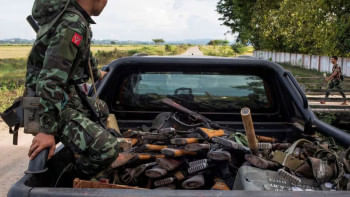
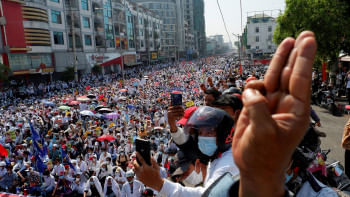
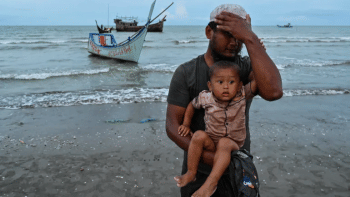



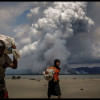



Comments